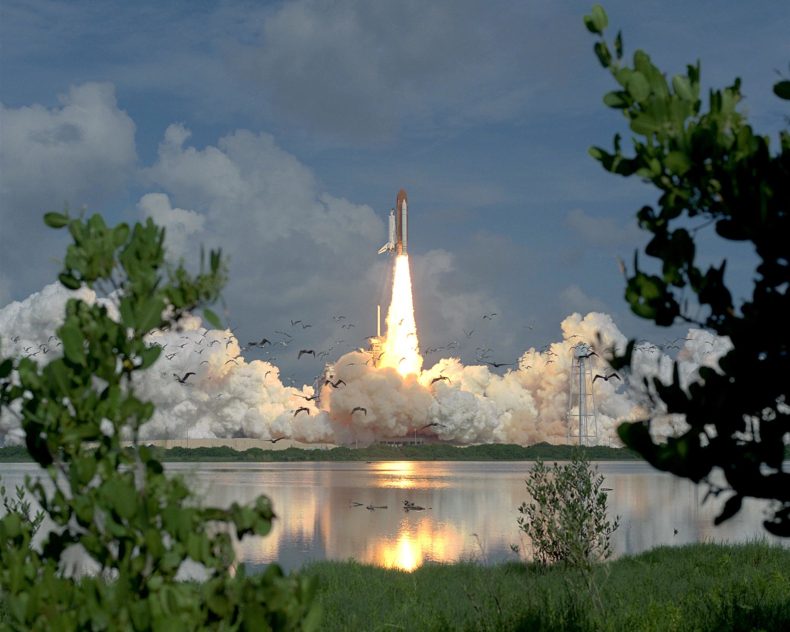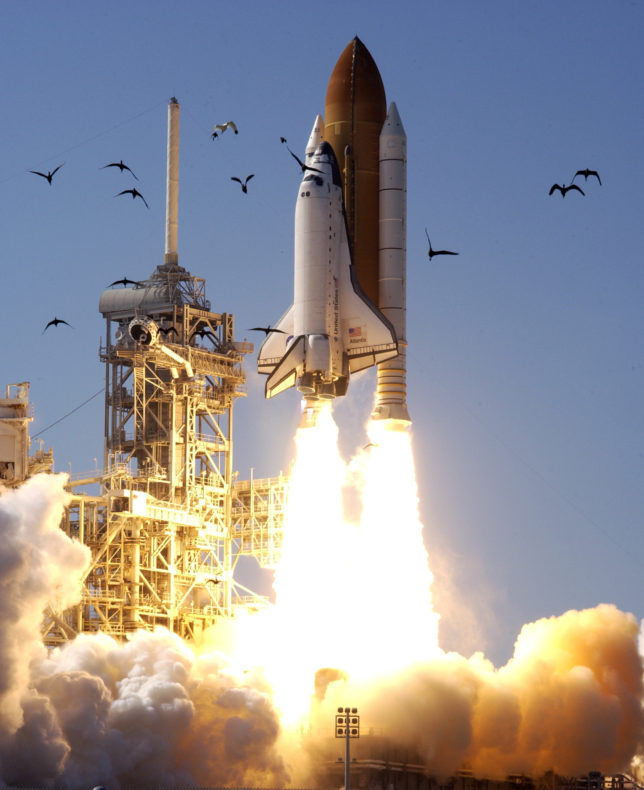
Last week, on my visit to the Moon rocks, I walked across a bridge topping a marsh. To my right were tall grasses emerging from a long, thin body of water, bending toward the east. To my left was a space shuttle perched on a 747. I heard waterfowl piping and chirping, but I couldn’t see them in the already-humid morning haze. I could see the Saturn V, the biggest rocket ever built, the one that took people to the Moon.
The incongruity of the scene was so incredibly disarming: A glistening natural scene interrupted by tall, skinny bombs made to throw people and machines off this planet.
But then I realized I’ve seen something like it before. Johnson is another of NASA’s marshes. A liminal space for people of liminal minds.
When you visit the buildings erected for America’s space program, you are also often visiting protected wildland. These places are full of birds and deer and alligators, as well as some of the smartest people in the country.
Johnson Space Center in Houston, a couple miles from Galveston Bay, is home to the astronaut corps and their training facilities. It’s also a wildflower refuge, and home to belted kingfishers; nine-banded armadillo; alligators; and lots more.
Kennedy Space Center in Cape Canaveral, Fla., shares space with Merritt Island National Wildlife Refuge and the Canaveral National Seashore. It is home to the launch pads that sent humans to space since the 1960s, as well as the, um, launch pads of nesting sea turtles, who hatch on the shore and make their way to the Atlantic. NASA uses several warning systems, including sirens, to shoo birds and other animals away from its spacecraft, but animals gonna animal.

When the space shuttles were flying, video of each launch always featured the startled sudden flight of birds, who sensed that they’d better get the hell out of there. Sometimes they didn’t. In one infamous incident, on July 26, 2005, a turkey vulture flew directly into the flight path of Space Shuttle Discovery, at that moment slowly rising off the Earth.
There are other wildlands in the space program. Marshall Space Flight Center in Huntsville, Ala., sits along the Tennessee River near Wheeler Lake, just a few miles from Wheeler National Wildlife Refuge. Even the Jet Propulsion Laboratory in Pasadena, Calif., sits at the foothills of the San Gabriel Mountains and the Angeles National Forest.
There are obvious security reasons for this; you wouldn’t want to put your rocket factory in the middle of town—Marshall, where most rockets and their engines are made, is a Superfund site—so it makes sense that these places would be off the beaten path, away from people, which happens to also be the places we’ve carved out for animals.
But the marshes of NASA are appropriate for other reasons.
A marsh is a liminal place, where water meets land and the two mix. By definition, they are a transition zone between terrestrial and aquatic ecosystems. A space center is a liminal place too. They were built as bridges, connecting humans to the very edges of Earth’s tenuous outer atmosphere. The space program ties the only home we’ve ever known to everything else, in the whole broader universe.
Marshes are a perfect place for a space program to take root.
And the one nearest me, Wallops Island: https://www.nasa.gov/centers/wallops/home. Across from Chincoteague.
Oh of course! I should have included Wallops — another marshy spot!